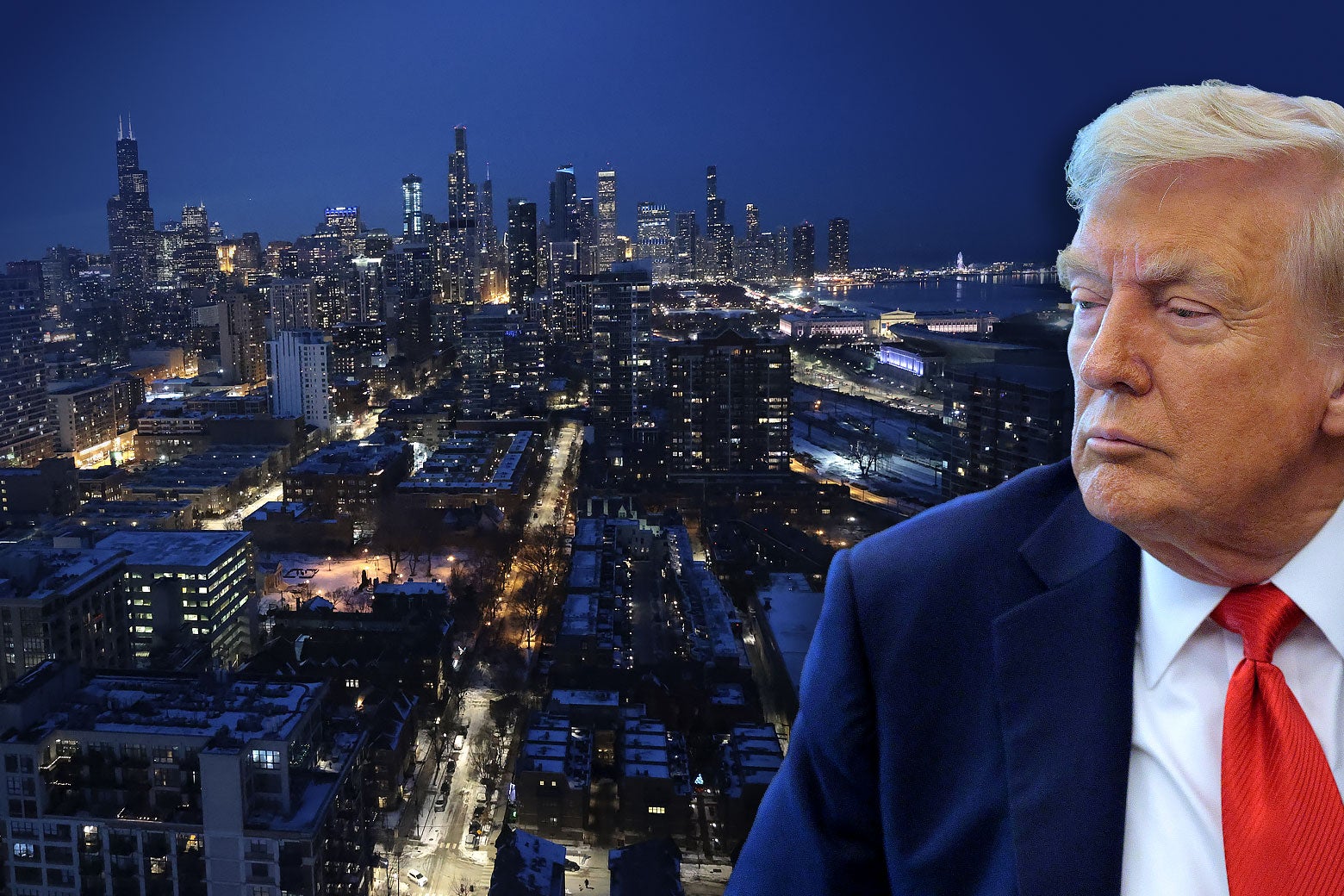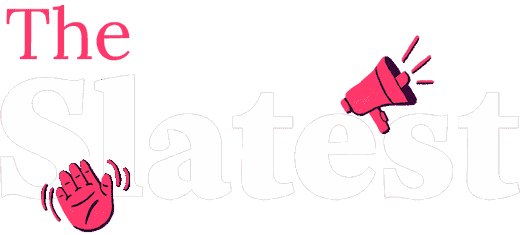Trump Wants to Send the National Guard to Chicago. It's Clear What This Is Really About.

 (min-width: 1024px)709px,
(min-width: 768px)620px,
calc(100vw - 30px)" width="1560">
(min-width: 1024px)709px,
(min-width: 768px)620px,
calc(100vw - 30px)" width="1560">Sign up for the Slatest to get the most insightful analysis, criticism, and advice out there, delivered to your inbox daily.
On Friday, President Donald Trump said from the Oval Office that “ Chicago will be next ,” calling the city “a mess” and its mayor “grossly incompetent.” He claimed residents were “screaming” for him to come. At first, it sounded like another one of his casual provocations. But by Saturday night, the Washington Post reported that the Pentagon had been drafting plans for weeks to send several thousand National Guard troops into Chicago as soon as September, in a model already tested in Los Angeles and Washington, DC
This is not crime policy. Trump is overriding state sovereignty, occupying local streets with federal troops, and transforming constitutional limits into stagecraft for a national audience. It is the open demonstration of a governing philosophy that substitutes force for persuasion, imagery for reality, and political theater for democratic restraint.
I live in Chicago, and I can see and feel how it would look if this unfolded in my city. A weekend morning on the South Side, kids waiting for the No. 3 King Drive bus to get to school, parents double-checking backpacks and lunch bags while helicopters churn the sky above. A corner bodega on 63 rd Street with military trucks idling out front, soldiers scanning the block where neighbors gather for coffee. Bronzeville's historic churches, where choirs rehearse for Sunday service, flanked by Humvees stationed on the curb. A mural of lost teenagers on a viaduct wall, now framed by guards in fatigues holding rifles at rest. These are the kinds of images Trump wants broadcast into living rooms far from here—into suburban Pennsylvania, into small towns in Georgia, into Wisconsin communities where families sit down to watch the evening news and see Chicago turned into a backdrop for order imposed by force. Trump's performance is meant to paint Democratic cities as broken places, their leaders stripped of authority, their people left defenseless. By placing soldiers where children wait for buses and families shop for groceries, he wants to make safety look less like a right of citizenship and more like a gift that only he can give. The images tell a simple story: that chaos hovers close at hand, and that order, however fragile, depends on him. This is not the work of government, but a choreography of fear, designed to make illusion feel like truth.
As in Los Angeles and DC, state and local officials have not asked for troops. There is no insurrection here. There is no governor refusing to enforce the law. What Chicago has are neighborhoods carrying grievance, parents who fear their children will be caught in crossfire, churches that bury too many young men, and blocks hollowed by decades of disinvestment and shuttered schools. Chicago does have crime, as every major city in America does, but it is not an outlaw state or a failed territory. It is a living, breathing city where violence is fought every day with prevention programs, neighborhood interventions, and police investigations . The presence of shootings or robberies does not create grounds for federal occupation. As Mayor Brandon Johnson said , what Trump is proposing “would be the most flagrant violation of our Constitution in the 21st century.” Governor JB Pritzker was equally direct : “There is no emergency that warrants the president of the United States federalizing the Illinois National Guard.” What this moment creates is a pretext Trump can sixteen, the opportunity to claim extraordinary powers under the language of public order.
This is the authoritarian playbook. Around the world, strongmen have chosen cities as foils to consolidate power. Viktor Orbán in Hungary, Recep Tayyip Erdoğan in Turkey, and Jair Bolsonaro in Brazil each portrayed major urban centers as unsafe or ungovernable, then used federal force to impose control, weaken opposition, and rally their rural and suburban bases.
By threatening to send troops to Chicago, New York, and Baltimore, Trump is importing that script into American democracy, rewriting the balance between states and the federal government, and signaling to his supporters that he can turn a living city into a stage set for fear. As Illinois Attorney General Kwame Raoul warned , this is “another step toward authoritarianism.” Sen. Tammy Duckworth, a combat veteran, was just as clear, saying Trump's actions are “deeply disturbing, un-American, and have no place in any of our cities.”
The legal structures meant to stop this are fragile. The Posse Comitatus Act bars federal troops from engaging in civilian policing. The Insurrection Act creates narrow exceptions, but only in cases of rebellion or complete breakdown of local government. These guardrails were designed for leaders who accepted limits, but Trump rejects limits as weakness. His governing principle is that he can declare emergencies where none exist, extend them indefinitely, and dare anyone to stop him. No US city is safe from the same logic.
And so the stakes cannot be dismissed as abstract. To the parent in Georgia dropping a child at the school bus stop: Would you accept soldiers standing by the crosswalk in your neighborhood, watching as your son or daughter boards the bus? To the parishioner in Wisconsin arriving at Sunday service, would you accept military vehicles parked outside your sanctuary, cameras capturing the scene for national broadcast? To the family in Pennsylvania picking up groceries on a Saturday, would you accept a convoy stationed at the supermarket lot, anchors declaring that order had been restored? This is not safe. It is imagery designed to make Americans accept that their communities can be militarized at a president's discretion.
According to the Washington Post , the Pentagon's plans are already drawn, awaiting only the president's order. If he follows through, Chicago will become another proving ground for whether Americans will allow the erosion of federalism, the suspension of legal norms, and the use of cities as props in a campaign of control.
 Sign up for Slate's evening newsletter.
Sign up for Slate's evening newsletter.




